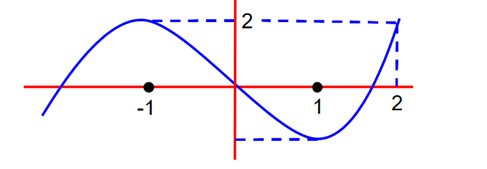Continuity and Differentiability
Get insights from 335 questions on Continuity and Differentiability, answered by students, alumni, and experts. You may also ask and answer any question you like about Continuity and Differentiability
Follow Ask QuestionQuestions
Discussions
Active Users
Followers
New answer posted
4 months agoContributor-Level 10
f (x) is an even function
So, f (x) has at least four roots in (-2, 2)
So, g (x) has at least two roots in (2, 2)
now number of roots of f (x)
It is same as number of roots of will have atleast 4 roots in (2, 2)
New answer posted
4 months agoContributor-Level 10
Let P (at2, 2 at) where
T : yt = x + at2 so point Q is
N : y = -tx + 2at + at3 passes through (5, -8)
⇒
⇒ t = -2
So ordinate of point Q is
New answer posted
4 months agoContributor-Level 10
Equation of L1 = is
….(i)
Equation of line L2 is
….(ii)
Required point of intersection of L1 and L2 is (x1, y1) then
….(iii)
……(iv)
From equations (iii) and (iv)
Required locus of (x1, y1) is
New answer posted
4 months agoContributor-Level 10
Given hyperbola :
it passes through
Now, equation of normal to hyperbola
satisfied
New answer posted
4 months agoContributor-Level 10
Draw g(t) = t3 – 3t
g'(t) = 3(t2 – 1)
g(1) is maximum in (-2, 2)
So, maximum (t3 – 3t) =
=
I =
again rewrite the f(x)
So f(x) is not differentiable at x = 2, 3, 4, 5
so m = 4
New answer posted
4 months agoContributor-Level 10
f (3x)- f (x) = x
Replace
Again replace
Also putting x = in f (3x) – 3 = F (14) – 3 = 7 f (14) = 10
Taking an Exam? Selecting a College?
Get authentic answers from experts, students and alumni that you won't find anywhere else
Sign Up on ShikshaOn Shiksha, get access to
- 65k Colleges
- 1.2k Exams
- 679k Reviews
- 1800k Answers

